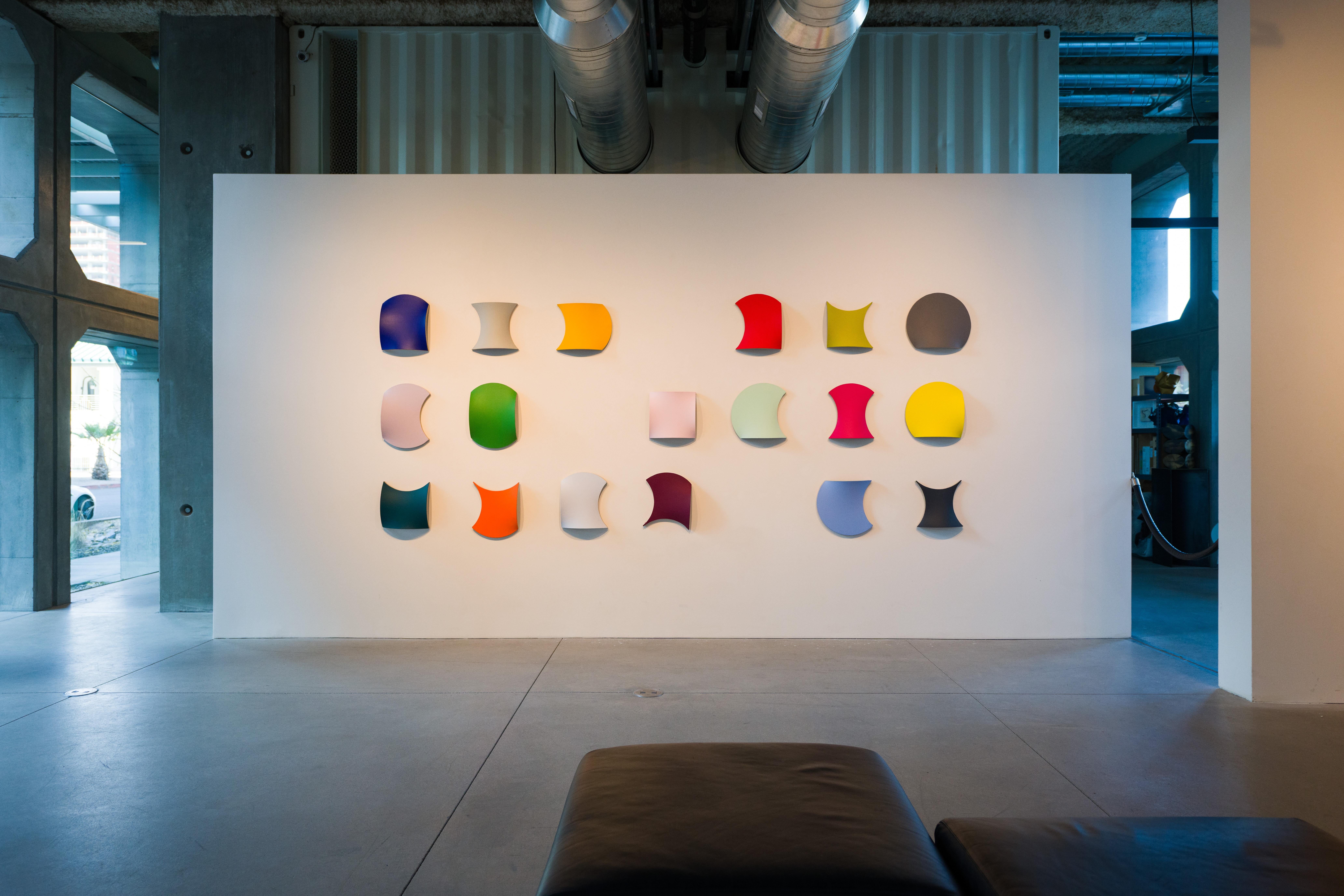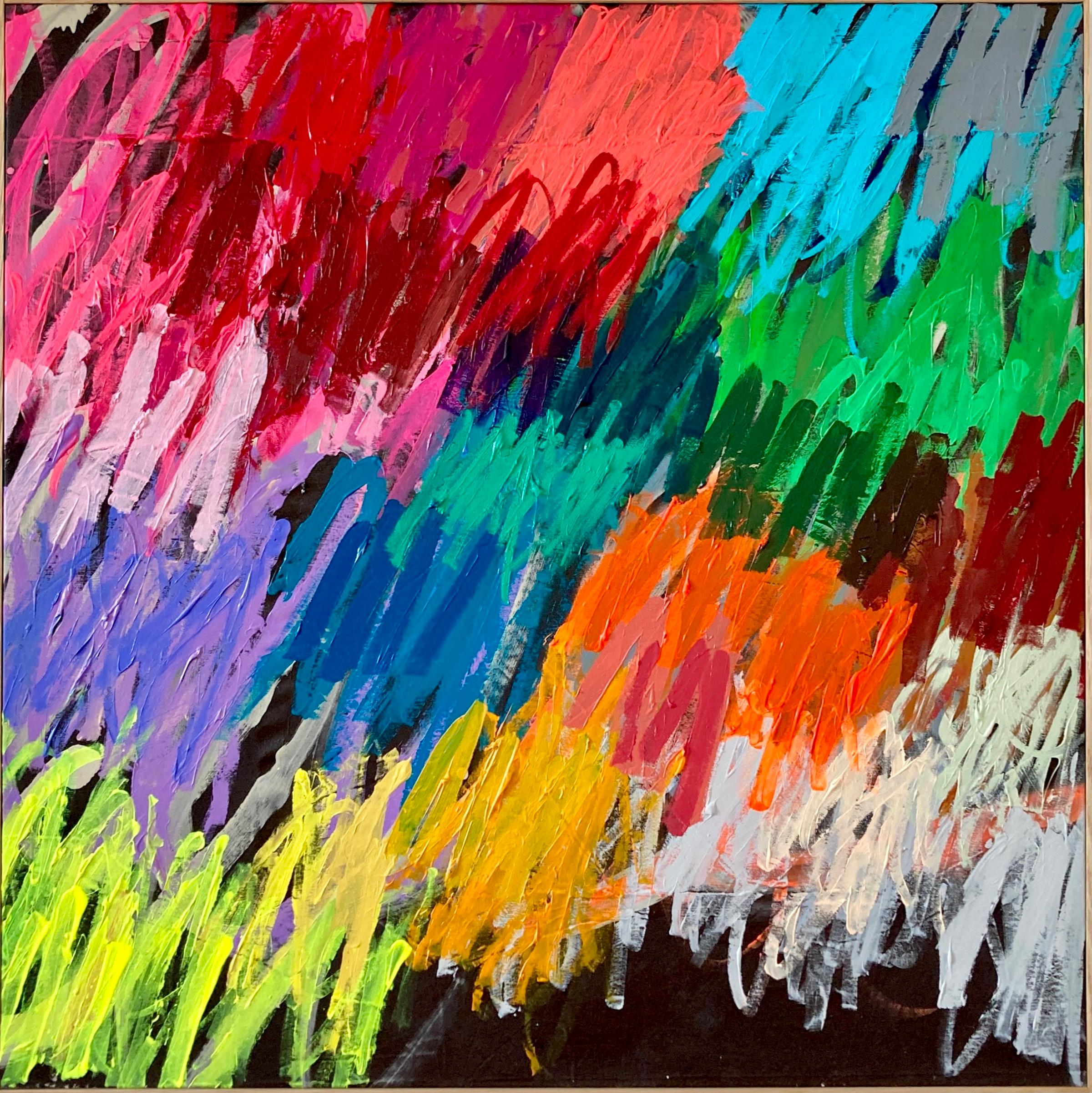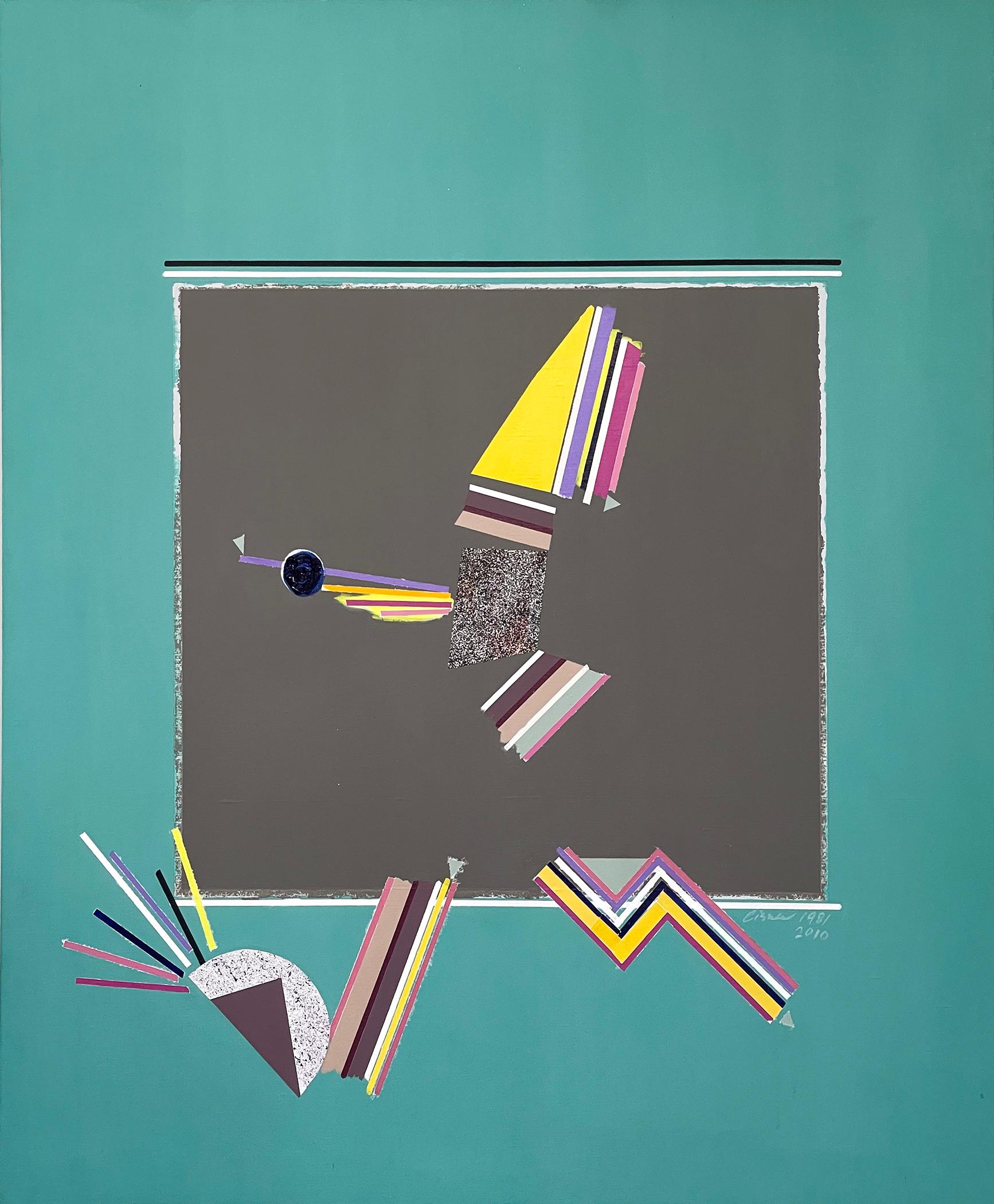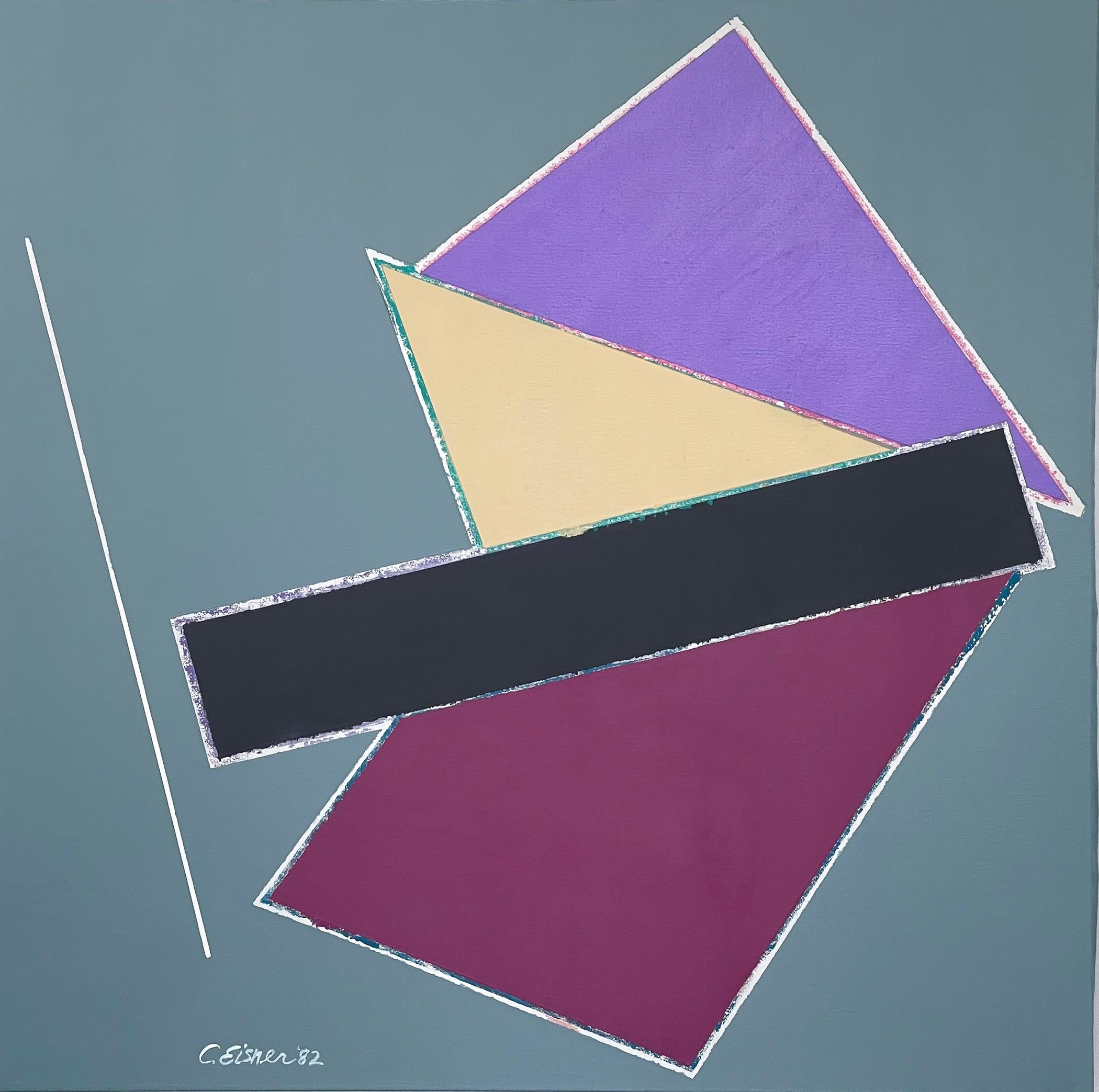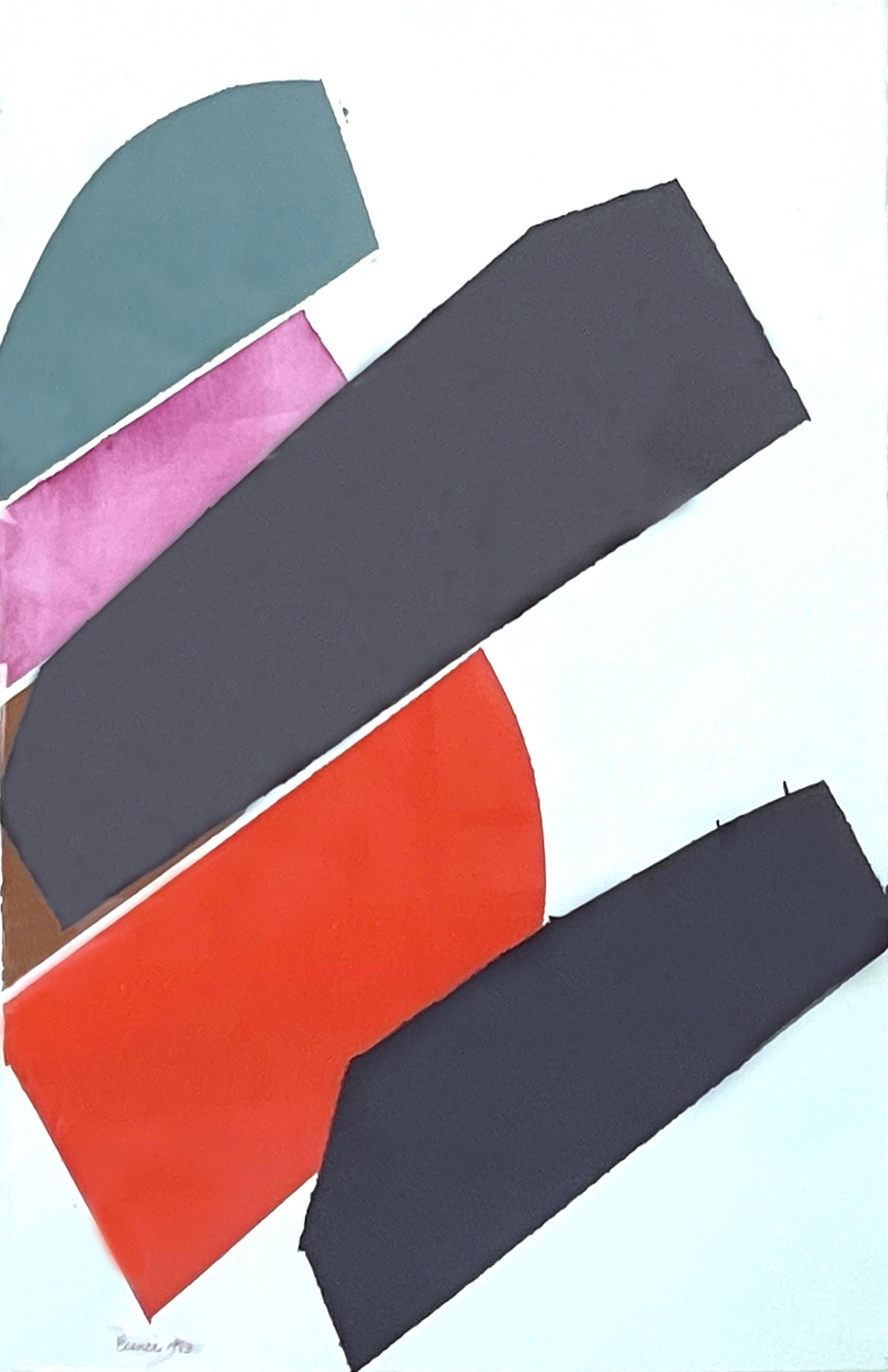David Hare"Cronus Descending" Acrylic on Linen Abstract Surrealist Painting by David Hare1990
1990
About the Item
- Creator:David Hare (1917-1992, American)
- Creation Year:1990
- Dimensions:Height: 64 in (162.56 cm)Width: 46 in (116.84 cm)
- More Editions & Sizes:UniquePrice: $60,000
- Medium:
- Movement & Style:
- Period:
- Framing:Framing Options Available
- Condition:
- Gallery Location:New York, NY
- Reference Number:1stDibs: LU1841214419092
David Hare
David Hare, a surrealist and Abstract Expressionist sculptor and photographer, was born in New York City on March 10, 1917. From 1936–37, he studied biology and chemistry at Bard College in Annandale-on-Hudson, New York. Hare had no formal training in art but began experimenting. He took up photography in the 1930s and by the end of the decade was working in color. The Walker Galleries in New York exhibited his photographs in 1939. From 1941–44, Hare founded and edited the surrealist magazine VVV with André Breton, Marcel Duchamp and Max Ernst. Peggy Guggenheim presented solo shows of Hare's work in her The Art of This Century Gallery from 1944–47. In 1948, he was a founding member, together with William Baziotes, Robert Motherwell and Mark Rothko, of The Subjects of the Artist school in New York and Hare, became friendly with Jean-Paul Sarte. Hare died on December 21, 1992, in Jackson.
- ShippingRetrieving quote...Ships From: New York, NY
- Return PolicyA return for this item may be initiated within 3 days of delivery.
- "Erotic #1 (Cronus Sex)" Acrylic and Paper Collage on Linen Canvas AbstractBy David HareLocated in New York, NYDavid Hare Erotic #1 (Cronus Sex), 1970 Acrylic and paper collage on linen 68 x 51 inches “Freedom is what we want,” David Hare boldly stated in 1965, but then he added the caveat, ...Category
1970s Abstract Abstract Paintings
MaterialsLinen, Paper, Acrylic
- "Cronus Elephant" Abstract Composition Acrylic on Linen by David HareBy David HareLocated in New York, NYDavid Hare Cronus Elephant, 1975 Acrylic on linen 82 x 60 inches “Freedom is what we want,” David Hare boldly stated in 1965, but then he added the caveat, “and what we are most afr...Category
1970s Abstract Abstract Paintings
MaterialsLinen, Acrylic
- "Black Whole, " Jay Rosenblum, Color Field Abstract with StripesBy Jay RosenblumLocated in New York, NYJay Rosenblum Black Whole Signed and titled on the reverse Acrylic on canvas 18 x 32 inches Jay Rosenblum experimented with different versions of the "Visual Stripe motif" for more ...Category
1970s Abstract Abstract Paintings
MaterialsCanvas, Acrylic
- "Jean Jean" Larry Zox, Color Field, Geometric Abstraction, Hard-Edge, YellowBy Larry ZoxLocated in New York, NYLarry Zox Jean Jean, 1964 Signed, dated, and titled on the stretcher Liquitex on canvas 58 x 62 inches Provenance: Solomon & Co., New York Private Collection, NJ Estate of the above, 2023 Committed to abstraction throughout his career, Larry Zox played a central role in the Color Field discourse of the 1960s and 1970s. His work of the time, consisting of brilliantly colored geometric shapes in dynamic juxtapositions, demonstrated that hard-edge painting was neither cold nor formalistic. He reused certain motifs, but he did so less to explore their aspects than to “get at the specific character and quality of each painting in and for itself,” as James Monte stated in his essay for Zox’s solo exhibition at the Whitney Museum of American Art in 1973. By the 1970s, Zox was using a freer, more emotive method, while maintaining the autonomy of color, which increasingly became more important to him than structure in his late years. Zox began to receive attention in the 1960s, when he was included in several groundbreaking exhibitions of Color Field and Minimalist art, including Shape and Structure (1965), organized by Henry Geldzahler for the Gallery of Modern Art, New York, and Systemic Painting (1966), organized by Lawrence Alloway for the Guggenheim Museum. In 1973, the Whitney’s solo exhibition of Zox’s work gave recognition to his significance in the art scene of the preceding decade. In the following year, Zox was represented in the inaugural exhibition of the Hirshhorn Museum, which owns fourteen of his works. Zox was born in Des Moines, Iowa. He attended the University of Oklahoma and Drake University. While studying at the Des Moines Art Center, he was mentored by George Grosz, who despite his own figurative approach encouraged Zox’s forays into abstraction. In 1958, Zox moved to New York, joining the downtown art scene. His studio on 20th Street became a gathering place for artists, jazz musicians, bikers, and boxers. He occasionally sparred with the visiting fighters. He later established a studio in East Hampton, where he painted and fished including using a helicopter to spot fish. In the 1950s and early 1960s, Zox’s works were collages consisting of painted pieces of paper stapled onto sheets of plywood. He then produced paintings that were illusions of collages, including both torn- and trued-edged forms, to which he added a wide range of intense hues that created ambiguous surfaces. Next, he omitted the collage aspect of his work and applied flat color areas to create more complete statements of pure color and shape. From 1962 to 1965, he produced his Rotation Series, at first creating plywood and Plexiglas reliefs, which turned squares into dynamic polygons. He used these shapes in his paintings as well, employing white as a foil between colors to produce negative spaces that suggest that the colored shapes had only been cut out and laid down instead of painted. The New York Times noted in 1964: “The artist is hip, cool, adventurous, not content to stay with the mere exercise of sensibility that one sees in smaller works.” In 1965, he began the Scissors Jack...Category
1960s Abstract Geometric Abstract Paintings
MaterialsCanvas, Acrylic
- Abstract (with Two White Vases)By Ed BaynardLocated in New York, NYEd Baynard Abstract (with Two White Vases), 2005 Signed, titled, and dated along the verso Acrylic on canvas 48 x 40 inchesCategory
Early 2000s Abstract Abstract Paintings
MaterialsCanvas, Acrylic
- "One" Gene Hedge, Abstract Color Field, Red Midcentury Bauhaus PaintingLocated in New York, NYGene Hedge One, 1968 Signed and dated on the reverse Acrylic on canvas 53 3/8 x 32 inches (P118) Gene Hedge was born (1928) and raised in rural Indiana. After military service, he b...Category
1960s Abstract Abstract Paintings
MaterialsCanvas, Acrylic
- The Alphabet of Silly ColorsBy Jan Maarten VoskuilLocated in Phoenix, AZb. 1964, Arnhem Jan Maarten Voskuil stretches his paintings into the third dimension. His crafted, partly curved wooden constructions are based on simple geometric principles: the c...Category
2010s Abstract Geometric Abstract Sculptures
MaterialsLinen, Acrylic
- Contemporary New Abstract Artwork Colors by Artist Christina Gschwantner 2024Located in BARCELONA, ESIn her work, artist Christina Gschwantner combines contrasting art movements such as Art Informel and Minimal Art. She succeeds in depicting and...Category
2010s Abstract Abstract Paintings
MaterialsRaw Linen, Oil, Acrylic
- The ClownBy Carole EisnerLocated in New York, NYArtist Bio: Carole Eisner was born and raised in New York City and received a BFA from Syracuse University. She has had eight solo shows in New York City at David Findlay Gallery, E...Category
1980s Abstract Geometric Abstract Paintings
MaterialsLinen, Acrylic
- ChiraBy Carole EisnerLocated in New York, NYArtist Bio: Carole Eisner was born and raised in New York City and received a BFA from Syracuse University. She has had eight solo shows in New York City at David Findlay Gallery, E...Category
1980s Abstract Geometric Abstract Paintings
MaterialsLinen, Acrylic
- StackedBy Carole EisnerLocated in New York, NYArtist Bio: Carole Eisner was born and raised in New York City and received a BFA from Syracuse University. She has had eight solo shows in New York City at David Findlay Gallery, E...Category
1980s Abstract Geometric Abstract Paintings
MaterialsLinen, Acrylic
- Clouded Sunset, Abstract Painting, Acrylic on Canvas, SignedBy Kim RomeroLocated in Armonk, NYClouded Sunset, by Kim Romero, is an abstract acrylic painting on canvas. Out Of The Blue has Kim's signature organic movement with textured layers of cream and blues that invoke a v...Category
2010s Abstract Abstract Paintings
MaterialsCanvas, Linen, Acrylic
